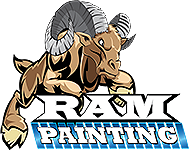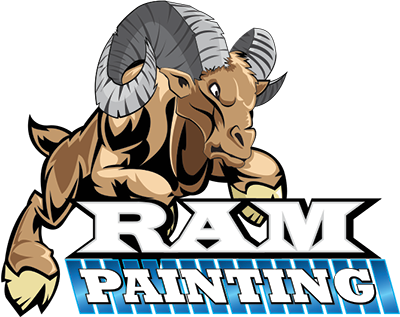Our Painting Company Las Vegas Can Treat Bubbling Exterior Paint
Do you have a sudden onset of paint bubbling, and you are wondering how to smooth the surface out? Are you wondering what causes paint bubbling shortly after painting your exteriors? Paint bubbles are a popular challenge. They occur broadly due to the condition of the underlying surface when the paint was applied. It can happen a few weeks after painting or take a longer period. Our painting company in Las Vegas can help.
Typically, paint bubbling is caused by moisture penetrating the interior wall, paint film direct contact with dew, high humidity or rain, painting on wet surfaces or in direct sunlight. The best way to prevent paint bubbling challenges is to understand the root cause and, after that, prevent its escalation. Fortunately, bubbling exterior paint can be treated. Treating paint bubbles is a task better left to the professionals since they know how to handle this problem. Below are some of the ways professionals treat bubbling exterior paint.
1. Remove the Damaged Paint Bubbles
Not all paint requires to be revamped. This is because some blisters may appear shortly after painting but decrease once the paint has dried. Blisters can be eliminated by scraping them away from the wall using a paint scraper, a putty knife, or an oscillating tool. Scraping helps to get rid of the loosened paint. If the paint has not loosened as time goes by, you can apply chemical paint strippers to loosen it. However, since strippers hold potent chemicals, caution should be taken to avoid discoloring the surface as it gets bleached after being left for too long.
How to Remove Damaged Paint
Pass the flat edge of the tool across the exterior of the wall to get rid of loosened pieces of paint. A painter near me says that you should scrape the entire part if it is affected with a rash of tiny bubbles. If you just have a few blisters, like two or three, there is no need of repairing the entire area. Some bubbles can be smoothed out.
After the blisters have been eliminated, a rough edge between the paint edges and the underlying surface will remain. You can use sandpaper to achieve a polished surface. You can also clean up by placing it under your workstation to capture the tiny pieces of paint that drop from the wall. In some scenarios, the underlying surface may not be uniform, pitted, or dented. In such a case, use a joint compound to clear the defects and sand to create an even surface.
Alternatively, you can rectify the issue with an iron. Las Vegas Painter says the procedure entails separating water from iron, then attaching the hot surface against the bubbles for a small duration, probably one minute. After the wall has regained average temperatures, use your fingers to clear up the bubbles.
2. Prepare the Surface
If you want an exceptional finish when painting, you must do thorough preparation for the surface. Although various reasons cause the formation of paint bubbles, most of them relate to the condition of the wall. In most cases, the surface might appear clean and in good shape. But it is imperative to clean before slathering paint over the walls. Cleaning the surfaces is crucial to allow your paint to adhere to the walls. Preparing the surfaces entails the removal of dust and dirt and getting rid of any oil, grease, or wax stains. If the surface is not deeply stained, use a sponge and warm water. However, if the surfaces have significant exposure to oil or grime, use detergent and warm water to clean. After cleaning, you must allow the surfaces to dry completely since paint bubbles forms on wet surfaces.
Blisters Caused by Moisture
Dampness causes the formation of paint bubbles. Damp surfaces are a result of moisture migration through the walls. If you realize there is too much moisture on the walls, it is imperative to rectify the issue before you embark on your painting process. To minimize the humidity levels in your home, you can use your air conditioner, install ventilation fans or install a dehumidifier.
Get rid of the paint bubbles by scraping or sanding down to the bare surface. Prime all open surfaces with superior prime. Recoat the surface with superior paint depending on your finish preference. Finally, don’t paint a few hours after rainfall as humid conditions surge the risk potential of paint bubbles formation.
For Paint Bubbles Caused by Heat
During painting, the weather conditions can have a considerable impact on the paint. Ram Painting, a painting company in Las Vegas, recommends not to paint in direct sunlight or hot conditions. This is because high temperatures cause the top of the paint to dry and solvents to evaporate. When the rising gases come into contact with the dried paint, paint bubbles are formed. Therefore, if you are working on hot climatic conditions, ensure the air conditioners are on in order to curb the issue. Paint blisters caused by heat can be eliminated through scraping, sanding, or cleaning the existing coats of paint or primer.
3. Repainting
So, you have already cleaned the surface and allowed it to dry completely. At this point, you can add another layer of paint to the surface. To deter the development of paint bubbles, stir the paint slowly and gently. Also, ensure you put down a coat of primer at the base coat before you paint your surfaces. This helps to create a uniform appearance with the rest of the wall. Do not forget that you cannot use oil-based paint directly over water-based latex. The two cannot mix, or they’ll form blisters.
Paint bubbles tend to form if you skip primer while painting. This is because open surfaces or plaster soak up more of the pigments present in the paint compared to substrates coated with primer. Due to this, your base coat of paint will develop unnecessary thinner binder film that will hinder the next paint to stick on. When paint does not adhere, it leads to the formation of blisters.
If your exterior develops blisters due to skipping the primer during the painting process, you can get rid of the blisters using the scraping-and patching technique. Wash the exterior of joint compound dust and other waste. Then apply a stain obstructing primer to the surface before you embark on re-painting. For additional help with exterior paint, contact our painting company in Las Vegas.

